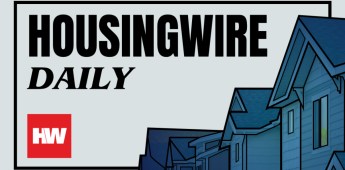Fannie Mae
The Federal National Mortgage Association, or as it’s more commonly known as, Fannie Mae, has a history that dates back to the Great Depression in the 1930s. Established by the U.S. Congress in 1938, the enterprise was born out of a need for more financial security in the housing market after the Great Depression resulted in a surge of foreclosures. The National Housing Act of 1934, which established the Federal Housing Administration (“FHA”) and the Federal Savings and Loan Insurance Corporation, was amended in 1938 to not only create Fannie Mae but also Fannie’s counterpart, the Federal Home Loan Mortgage Corporation, better known as Freddie Mac.
Fast forward to 2008 and the two enterprises were forced into the spotlight again during the Great Recession. Between an increasing number of people getting mortgages with little to no credit, a fast-growing supply of vacant homes on the market from borrowers going into default and many other factors that collided together, America’s economy was in trouble and Fannie Mae and Freddie Mac were at the center of it. In the aftermath of this, the United States government stepped in and put the enterprises under conservatorship, which is how they still operate today, acting now as government-sponsored enterprises.
In today’s market, Fannie Mae buys and guarantees mortgages, working with lenders in the secondary market, meaning they don’t actually originate or service the mortgages. Overseen by the Federal Housing Finance Agency, which was created in 2008 to supervise the two enterprises, Fannie Mae now operates to ensure the availability of affordable mortgage loans and maintain the 30-year, fixed-rate mortgage.
While talks heightened under the Trump Administration to remove both GSEs from conservatorship, the Biden Administration has shown no interest in continuing down that road. Instead, the current acting director, Sandra Thompson, is focused on achieving greater affordability in the housing market, expanding access to credit in underserved communities, fair lending and safety and soundness in the housing space.
Latest Posts
Fannie Mae expands use of AOLs in selling guide update
Dec 14, 2023In an update to its selling guide, Fannie Mae announced Wednesday that it was expanding the use of attorney opinion letters in lieu of title insurance.
-
Opinion: Title and settlement fees aren’t a barrier to homeownership
Dec 14, 2023 -
Homeowners are getting worried about flood insurance costs
Dec 12, 2023 -
Opinion: To support low-income borrowers, return Fannie Mae and Freddie Mac to the private sector
Dec 07, 2023 -
Conforming, FHA loan limits rose for 2024, but who benefits?
Dec 01, 2023 -
FHFA conforming loan limits increase to $766,550 in 2024
Nov 28, 2023 -
MBA sees benefits, shortcomings in FHFA’s new ERCF rule
Nov 27, 2023 -
Fannie Mae on Q4: Existing home sales will be lowest since 2010
Nov 22, 2023 -
FHFA issues final rule on commingled securities for GSEs
Nov 21, 2023 -
Fannie Mae President David Benson to retire as GSE announces leadership changes
Nov 14, 2023 -
FHFA imposes a $140B cap to GSEs’ multifamily loan purchases in 2024
Nov 14, 2023 -
Fannie Mae extends Positive Rent Payment pilot program through December 2024
Nov 14, 2023








